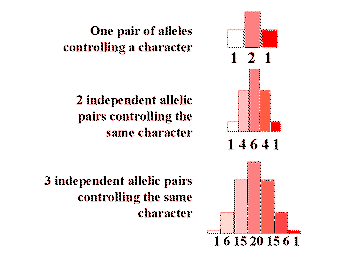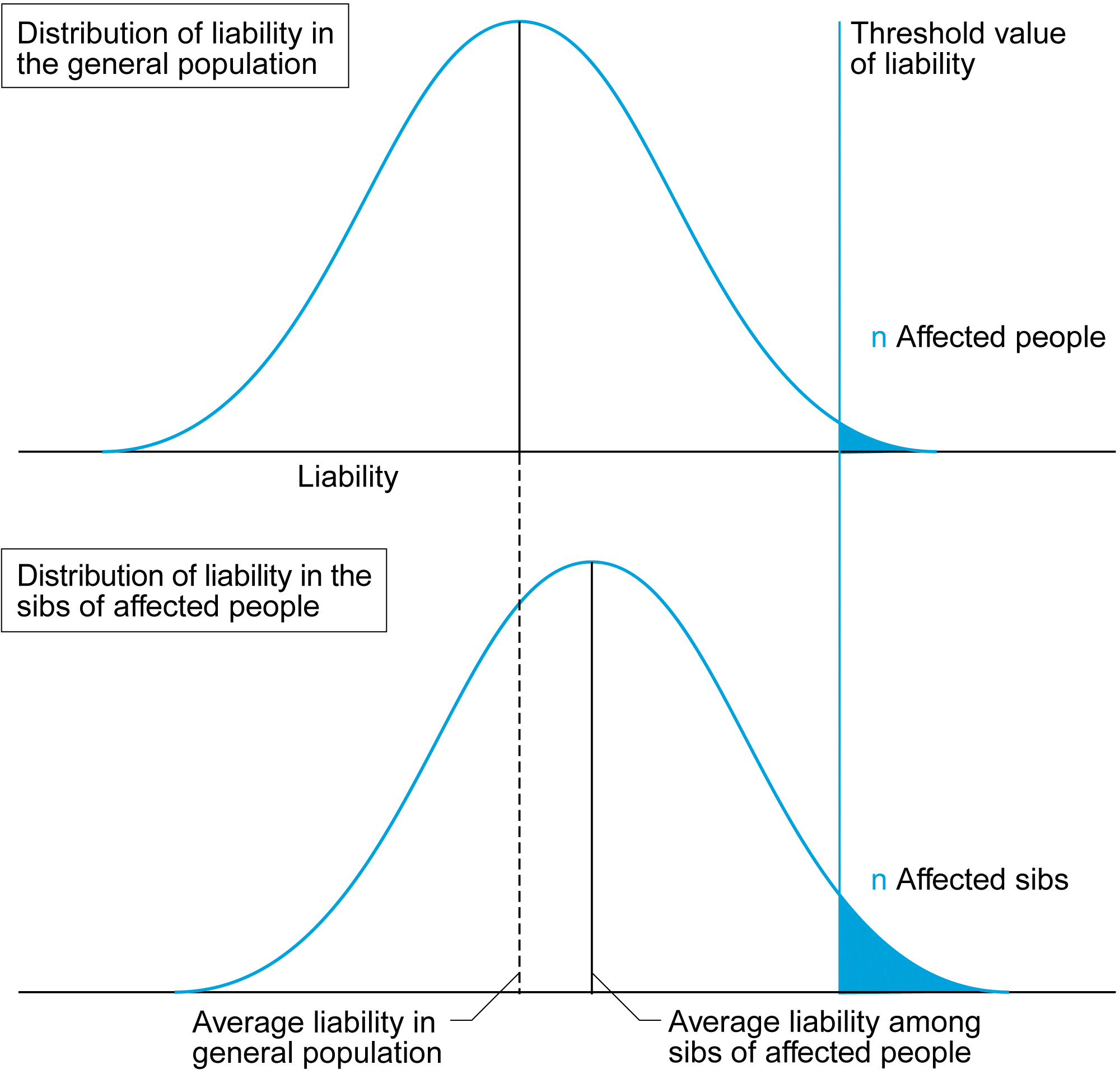f height were to be determined by two equally frequent alleles, a (tall) and b (short), at a single locus, then this would result in a discontinuous phenotype with three groups in a ratio of 1 (tall-aa) to 2 (average-ab/ba) to 1 (short-bb).

POLYGENIC AND MULTIFACTORIAL INHERITANCE
By far the major contribution of genetic factors to morbidity and mortality is through the many common diseases and malformations which show a familial tendency but do not follow simple Mendelian patterns - multifactorial conditions.
Examples include several of the most common congenital malformations and many of the common acquired diseases of childhood and adult life. These conditions show a definite familial tendency but the incidence in close relatives of affected individuals is usually around 2-4%, instead of the much higher figures which would be seen if these conditions were caused by mutations in single genes.
Examples
Congenital malformations:
cleft lip/palate
club foot (talipes)
congenital dislocation of the hip
congenital heart disease
neural tube defects
pyloric stenosis
Diseases of childhood and adults:
diabetes
epilepsy
hypertension
ischaemic heart disease
manic depression
peptic ulcer
schizophrenia,
Multifactorial conditions are considered to be determined by the summation of the effects of multiple genes at different loci, together with environmental factors.
Most human characteristics are determined as continuous traits – by definition they have a continuously graded distribution in the population. The distribution of height, for example, in a population is Gaussian with the majority of individuals centred around the mean.
Polygenic inheritance and the normal distribution
It is possible to show that a phenotype with a normal distribution in the general population can be generated by polygenic inheritance involving the action of many genes at different loci, each of which exerts an equal additive effect.
| This can be illustrated by considering a trait such as
height.
f height were to be determined by two equally frequent alleles, a (tall) and b (short), at a single locus, then this would result in a discontinuous phenotype with three groups in a ratio of 1 (tall-aa) to 2 (average-ab/ba) to 1 (short-bb). |
|
 |
If the same trait were to be determined by two alleles at each of two loci interacting in a simple additive way, then this would lead to a phenotypic distribution of five groups in a ratio of 1 (4 tall genes) to 4(3 tall + 1 short) to 6 (2 tall + 2 short) to 4 (1 tall + 3 short) to 1 (4 short). |
| For a system with three loci each with two alleles the phenotypic ratio would be 1-6-15-20-15-6-1. | |
It can be seen that as the number of loci increases, the distribution increasingly comes to resemble a normal curve, thereby lending support to the concept that characteristics such as height are determined by the additive effects of many genes at different loc
The threshold model for discontinuous (disease) traits
For discontinuous traits, the susceptibility of the population is also based on a Gaussian distribution caused by the additive effects of several loci. It is postulated that there is a liability threshold; people whose genetic predisposition is above this will manifest the disease.

Genetic counselling in multifactorial conditions
For genetic counselling in multifactorial conditions, one has to use empiric risk figures - the observed recurrence risks for different relatives of an affected individual. These are obtained through populaltion studies, and strictly apply only to the population from which they were collected.
After two children have been born with a multifactorial condition the recurrence risk rises because a couple must have either a particularly high genetic susceptiibility or suffer chronic environmental insult, or both. Thus genetic counselling for multifactorial conditions depends on a detailed pedigree and good, relevant and up-to-date empirical data.
Summary